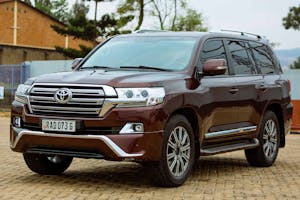Description:
This article will delve into the fascinating history of Toyota, exploring the company’s development over the years, from its early years as a small textile manufacturer to becoming one of the largest and most successful car manufacturers in the world. It will highlight key innovations, landmark models, and how Toyota’s approach to manufacturing, design, and technology has influenced the global automotive industry.
Introduction:
The story of Toyota is one of transformation, innovation, and continuous improvement. From its inception in 1937, Toyota has made significant contributions to the automotive world. The company’s success is built upon principles of efficiency, reliability, and a customer-centric approach, which have allowed it to remain at the forefront of the automotive industry for decades.
Early Years (1930s-1950s):
Toyota’s journey began in the 1930s when founder Kiichiro Toyoda shifted the focus from weaving machines to automobiles. The company’s first car, the Model AA, was introduced in 1936, closely following the founding of Toyota Motor Corporation. The 1950s marked a significant era for the brand, as Toyota ventured into the production of more modern cars, expanding its market beyond Japan. By the end of the decade, the company had established itself as a key player in the Japanese automotive sector.
The 1960s – Global Expansion:
The 1960s marked a period of immense growth for Toyota, both domestically and internationally. In 1966, Toyota introduced the iconic Corolla, which would become one of the best-selling cars of all time. With its focus on affordability and reliability, the Corolla became a global success, cementing Toyota’s presence in markets across the world. During this time, Toyota also expanded its manufacturing capabilities, establishing plants in the United States and other countries.
The 1970s and 1980s – Innovation and Quality:
The 1970s and 1980s were pivotal decades for Toyota. The global oil crisis in the 1970s prompted Toyota to develop fuel-efficient vehicles, setting the stage for the future development of hybrid technologies. Toyota also embraced a philosophy of continuous improvement called “Kaizen,” which transformed its production process and made the company a leader in manufacturing efficiency.
In the 1980s, Toyota introduced the luxury brand Lexus, which quickly became known for its blend of performance, luxury, and reliability. This move helped Toyota solidify its position as an automaker catering to all segments of the market, from affordable economy cars to high-end luxury vehicles.
The 1990s – Hybrid Technology and Innovation:
The 1990s saw Toyota pioneer hybrid vehicle technology. In 1997, the company launched the Prius, the world’s first mass-produced hybrid car. This was a major step towards Toyota’s vision of a sustainable future. The Prius’s success not only boosted Toyota’s reputation for environmental responsibility but also set the stage for the company to lead in hybrid technology for years to come.
The 2000s to 2010s – A Focus on Sustainability and Technology:
Entering the new millennium, Toyota focused heavily on sustainability and technological innovation. The company continued to evolve its hybrid lineup, adding hybrid versions of popular models like the Camry and Highlander. Additionally, Toyota made strides in developing hydrogen fuel cell technology with the introduction of the Toyota Mirai, a zero-emission vehicle powered by hydrogen.
The Toyota Production System (TPS), which focuses on lean manufacturing and minimizing waste, became a global model for efficiency and is widely regarded as one of the primary reasons for Toyota’s success. Throughout the 2000s and 2010s, Toyota consistently ranked among the top automakers globally in terms of production and innovation.
The 2020s – Electric Vehicles and Autonomous Technology:
As the automotive industry evolves towards electric vehicles (EVs), Toyota has committed to expanding its lineup of EVs and investing in the development of autonomous driving technologies. The launch of the Toyota bZ series of electric vehicles marks a significant step in Toyota’s journey towards a sustainable, electrified future.
Toyota is also exploring the future of mobility with innovations in artificial intelligence, robotics, and smart city initiatives. Their investments in autonomous vehicle research, including partnerships with various technology companies, indicate that Toyota is positioning itself to be a leader in the next era of transportation.
Conclusion:
Toyota’s evolution over the decades is a testament to its resilience, adaptability, and commitment to innovation. From its humble beginnings in Japan to its global presence as a leader in automotive manufacturing, Toyota’s journey has been shaped by its ability to respond to changing market demands and technological advancements. As we look to the future, Toyota continues to push the boundaries of what’s possible in the automotive industry, with a focus on sustainability, innovation, and customer satisfaction.
Would you like further details on any particular section, or should I expand any part of this article further?